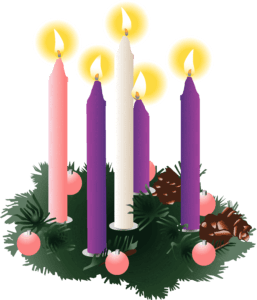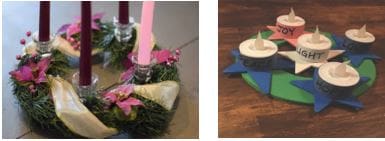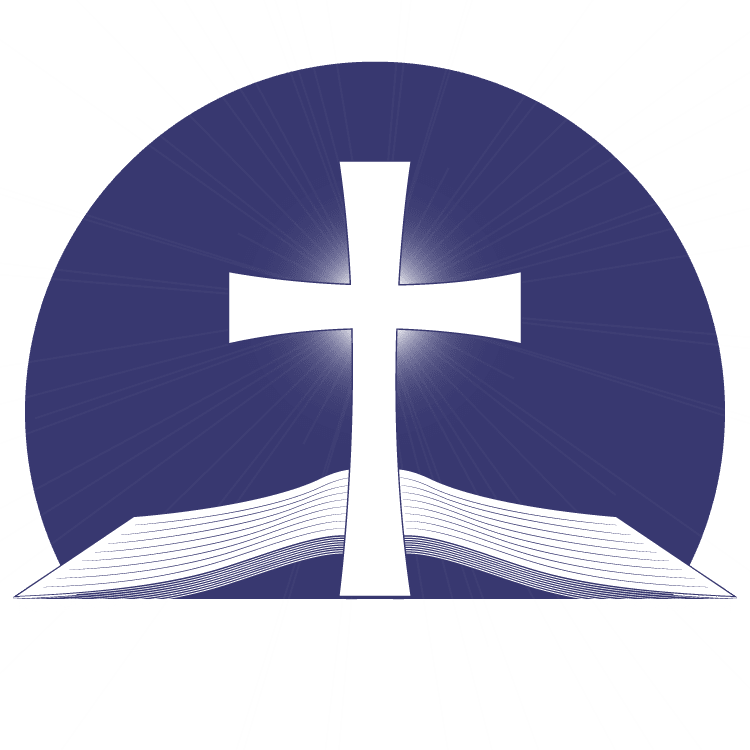
Advent is a season of waiting, expecting, and hoping. The word “advent” comes from the Latin word “adventus,” which means “coming.” For Christians, celebrating Advent helps prepare our hearts for the celebration of the “coming” of Jesus Christ as our Savior and Lord. The Advent Season begins the fourth Sunday before Christmas Day, and this year the Advent season begins on November 28.
While the focus of Advent is on the birth of Jesus Christ and the reality of His first coming, the actions, and events used in the celebration of our Lord’s birth also remind us and assure us of His promise to return. However, the Lord’s second coming will not be as a baby boy with no place to lay His head, but rather as the King of Kings and Lord of Lords, having been crowned by God the Father with glory, honor, and praise. Every true believer lives in the glorious expectation of that “advent” of our Lord.
This year, while we will still follow the four main themes of hope, peace, joy, and love, we are also going to look at the lives of the five women in the genealogy of Jesus, four of whom were not the kind of women one would expect to be included in the lineage of our Savior.
When it comes to the genealogies in the Bible, most readers overlook them, not only because they can’t pronounce the names but because they don’t understand their theological significance to God’s eternal plan for our redemption. Therefore, in reading the Christmas Story, most readers begin in Luke 2:1, or Matthew 1:18, with the birth of Jesus.
However, the whole Christmas story begins in Matthew 1:1, with “the record of the genealogy of Jesus, the son of David, the son of Abraham.” The expression “the record of the genealogy” in the Greek text reads, “the book of the genesis of Jesus Christ.”
Because of their prejudicial concern over bloodlines, Jews paid close attention to genealogies, which is why Matthew and Luke introduced their gospels with a detailed genealogy of Jesus. According to biblical prophecy, the Messiah had to be from the lineage of Abraham and David. In the second chapter of his gospel, Luke recorded Joseph and Mary’s journey from Nazareth to Bethlehem to register for the census because Joseph was “of the house and family of David.”
The five women Matthew included in Jesus’ genealogy included:
- Tamar – the daughter-in-law of Judah, the son of Jacob, and the grandson of Abraham. Tamar deceived Judah into having sexual relations with her and became pregnant with two sons, one of whom became the seed-son of the Savior, Jesus Christ.
- Rahab – the woman whose name is always followed by her occupation – the harlot. Rahab lied to the authorities about the location of the spies, but the writer of Hebrews referred to her as “a woman of faith in the God of Israel.”
- Ruth – a Moabite woman, the daughter of the incestuous relationship between Lot and one of his daughters. Ruth was a Moabite woman who married Boaz, a Jewish man who became David’s great-grandmother.
- Bathsheba – is always identified as Uriah’s wife. After the child of David’s adultery with Bathsheba died, David married Bathsheba, and they birthed another son named Solomon, who was in the direct lineage of Jesus.
Before we look at the fifth woman, let us ask ourselves why the Holy Spirit would inspire Matthew to include the names of these four women in the lineage of Jesus?
- To send a message to the self-righteous not to think more highly of themselves or to look down upon those who were forbidden to attend the Temple Services because of their sins, for Jesus was a “Friend of sinners.”
- To display the richness of God’s Amazing Grace, that we all have sinned and fallen short of the glory of God, and to show that Jesus had not come to “call the righteous to repentance,” but rather “to seek and to save that which was lost.”
- Mary – while the purest of the five, Mary was the most unlikely person to be chosen as the mother of Jesus. Mary was a devout believer in God who trusted Him with her reputation and her future. Even at the age of 14, Mary had such faith in God that when she finally understood what God was doing through her, she cried out, “Behold the bond-slave of the Lord: may it be done to me according to Your word.” (Luke 1:38)
With our world so engulfed in the darkness of man’s depravity, perhaps God is calling us to focus on our spiritual priorities rather than our temporal pleasures. With the store shelves empty of the physical things we normally buy to express our love to one another, perhaps God is calling us to focus on the unlimited love He has given to us through the sacrifice of His only Son for our sins. Perhaps this year, the focus of Christmas can be upon Christ!
The Advent wreath is a wonderful tool to help parents tell the real Christmas story to their children. The wreath is an evergreen circle with five candles, four around the wreath, and one in the center. (Some use battery-operated colored lights.)

The circle of the wreath reminds us of God’s eternity – He has no beginning or end. The green of the wreath speaks of the hope that we have in God, the hope of newness of eternal life. Candles symbolize the light of God coming into the world through the birth of His son. The four outer candles represent the period of waiting during the four Sundays of Advent, which symbolize the four centuries of waiting between the prophet Malachi and the birth of Christ.
- The Prophecy Candle – (purple) the candle of hope – Romans 15:12-13
- The Bethlehem Candle – (purple) the candle of peace – Luke 3:4-6
- The Shepherd Candle – (pink) the candle of Joy – Luke 2:7-15
- The Angel Candle – (purple) the candle of love –
John 3:16-17
- The fifth candle is the Christ Candle – (white) –
John 1:29
As the candles are lighted over the four-week period, it symbolizes how the demonic darkness of fear and utter hopelessness of this world, as well as the guilt and remorse for our sins, recede to the degree that the Light of the Word is allowed to shine. The flame of each new candle reminds us that something is happening; God is at work, and more is yet to come.
As we see our world drowning in chaos and confusion, and with wickedness and evil being manifested before us, unashamedly, let us begin this advent season with a sense of repentance and contrition for the unconfessed sins in our own heart and then for God’s people around the world, that believers would renew their love for the Lord Jesus, and unbelievers would see their need of a Savior; the One whose birth even they will celebrate, albeit in selfishness.
Linda and I join you in this journey, and we pray that God will reveal Himself afresh and anew unto you as you make room for His Son in your heart! – Pastor Wayne
A few suggestions for parents:
- Familiarize yourself with the gospel presentation at the back of the book, focusing on the three “R’s” of Ruin, Redemption, and Regeneration.
- Think of some ways you can communicate those three terms to your children in tangible terms, such as an antique vase that was salvaged from the trash and restored to new life.
- While the purpose of Advent is to revisit the historical facts of God’s promise to send a Savior, the study of the five women proves our salvation is by grace alone, through our faith alone, and in Christ alone.
- Tamar, Rahab, Bathsheba, and Ruth all looked forward to the coming of their Savior. Mary was convinced that the baby conceived in her womb was to be her Savior.
- The evidence of our regeneration is another “R” – Repentance, a full turn from our sin and a return to God. Repentance is more than saying we are “sorry” for our sins. Repentance is to do an “about-face” and to walk in a new direction.
- In 2 Corinthians 5:17, the Apostle Paul wrote, “Therefore, if anyone is in Christ, he is a new creation; old things have passed away; behold, all things have become new.”
